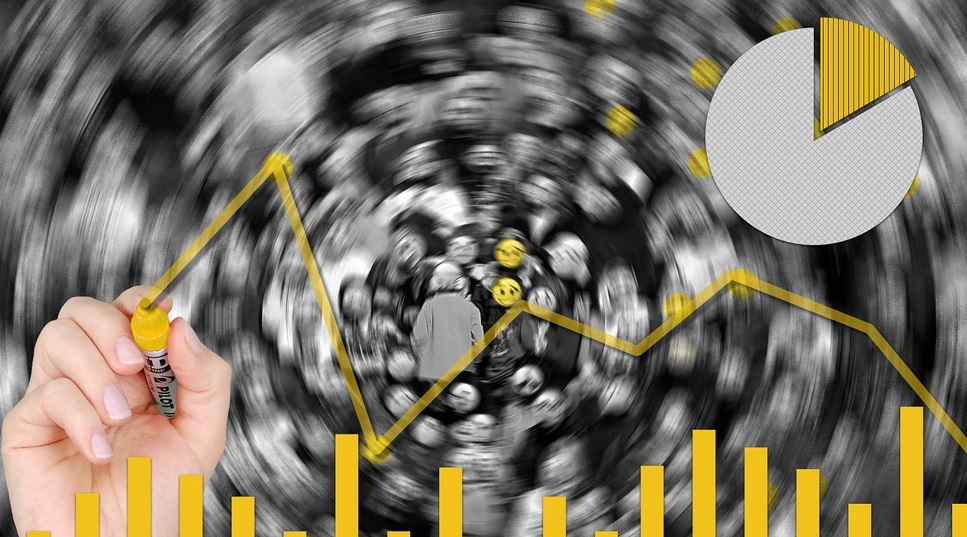How to know what is Big Data and Business Intelligence?

August 31, 2020
Here we are going to talk about Big Data and Business Intelligence. However we want to make our article accessible to all types of readers, so we are going to start from the very beginning, and the easiest way to do this is to give an example in order to explain it.
Mary is a florist, in her flower shop Mary has a good business, she is doing very well, she has several clients and she wants to find a way to better serve them, to know their needs and define products that better suit her target audience, generating promotions adapted to their needs, interests and ultimately to grow her business. For this Mary decides to collect information of all her clients and all the information generated in her small business; however, this is a lot of information and comes from different sources.
Information for Big Data
We have information of sales themselves, how many customers she have, what each one has bought from us, which of them are recurring or which products are sold the most. We also have client’s demographic information; their gender, age, where they live and in some cases what they do for a living. We have information on our raw materials and suppliers, costs of products that each supplier bring for us, type of material we use to prepare the arrangements, credit that each supplier is willing to give us. It turns out that Mary also has a web page and we have the analytics of its visits. We have information from social networks and even information from emails, as we have already said, a lot of information.
It would be good to be able to relate all this information, to know which customers bought which products that were supplied by which supplier, who bought through the page and who bought in the store, the hours the page is most visited and the time are there higher sales on the page and finally have all that information in one place so that we can analyze it and design strategies to improve our business in every way. That’s what Business Intelligence and Big Data are all about.
So, how to know what is Big Data and Business Intelligence?
As we already mentioned, we are going to talk in simple terms since these topics are not only for the tech guys but to anyone who wants to grow their business through the information they generate daily. Let’s start with Business Intelligence, this term refers to the extraction of valuable knowledge through processing and analyzing key information generated by the business, all this with the intention of developing new business models or improving existing ones as well as speeding up an effective and accurate decision-making.
And summing it up in one line, Big Data is everything that we just said but applied to anything, not just business. Perhaps, that is the reason why terms Big Data and Business Intelligence are so confused, because the area in which we commonly hear about Big Data is in business. Business Intelligence uses Big Data techniques for optimization of business strategies and processes, but Big Data can be applied to any area of knowledge from which we want to extract valuable insight and from which we have a large amount of information available; meteorology, biology, space travel, urban planning, you name it.
A little more about Big Data
However, as we know you want to know more, we will talk a little more in detail about Big Data. This term refers to the technological processes that must be executed to be able to collect all this information, store it in a coherent way and analyze it to obtain important knowledge that we did not previously possess, the last thing seems obvious, but it must be made very clear, it is very important that this knowledge is new and gives us information that was previously unknown to us, this is the true objective of Big Data.
In order to make BD and BI, it is necessary to first collect as much information as possible and store it in a special data repository for these purposes; this repository can be a NoSQL database or a data warehouse. Once the information is collected and stored properly, the metrics that are important to us must be defined. These metrics are numerical values that can be obtained from the information we have and tells us if something is going well or wrong with our business, a metric can be the number of sales per month, another important metric can be the number of flowers that Mary lost a month because she could not sell them and they wilted and another important metric could be the time it takes for the orchid supplier to bring us the flowers since they are the only supplier we have for such an exotic flower. All these metrics must be defined by someone who knows the business and who also knows Big Data, in this case a business analyst.
Big Data in Business
In business matters (we already know that Big Data techniques can be applied in a large number of fields but let’s stick to our business example) these metrics can be classified into three large groups: Profits, Efficiency and Risks. The first have to do with the money our business produces, and they help us design strategies to increase this income. How can we increase our sales? How can we make a customer who bought once buy again in the future? How can we attract new clients? These are the questions we want to answer. In the case of risk metrics, we want to analyze all situations that may represent an operational problem for Mary. Let’s say she is a supplier of flower arrangements for a large wedding planning company, this company has a contract with Mary that imposes a fine on her in case she cannot supply a certain demand, and in turn this company is her main orchids buyer, if we start to detect delays at the orchid supplier this could pose a fine risk for Mary. Finally, there are the efficiency metrics, in some cases it is not possible to increase sales but it is possible to reduce production costs, which means an increase in profit.
Decision making with Big Data
Once metrics are defined, automatic analysis processes will be executed on the data that will yield a set of results. This set of results in itself is difficult to understand, so it needs to be “translated” into relevant information for people in charge of decisions through a data presentation or data visualization process.
And after all this is thanks to BI and BD Mary already has enough knowledge to realize that the best thing she can do for her business is open a small branch in the west of the city, give discounts to customers who buy for the second time and definitely find a second orchid supplier!
We hope to have clarified a little the panorama of what is Business Intelligence and Big Data, we do not hope that this article is the definitive answer, but shed a little light about their differences and coincidences and whet the appetite for more knowledge about these technologies that are increasingly available to everyone.








